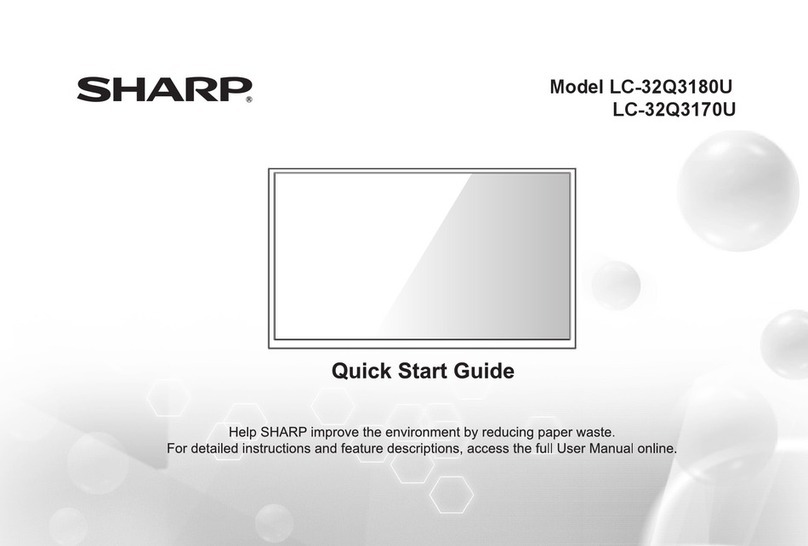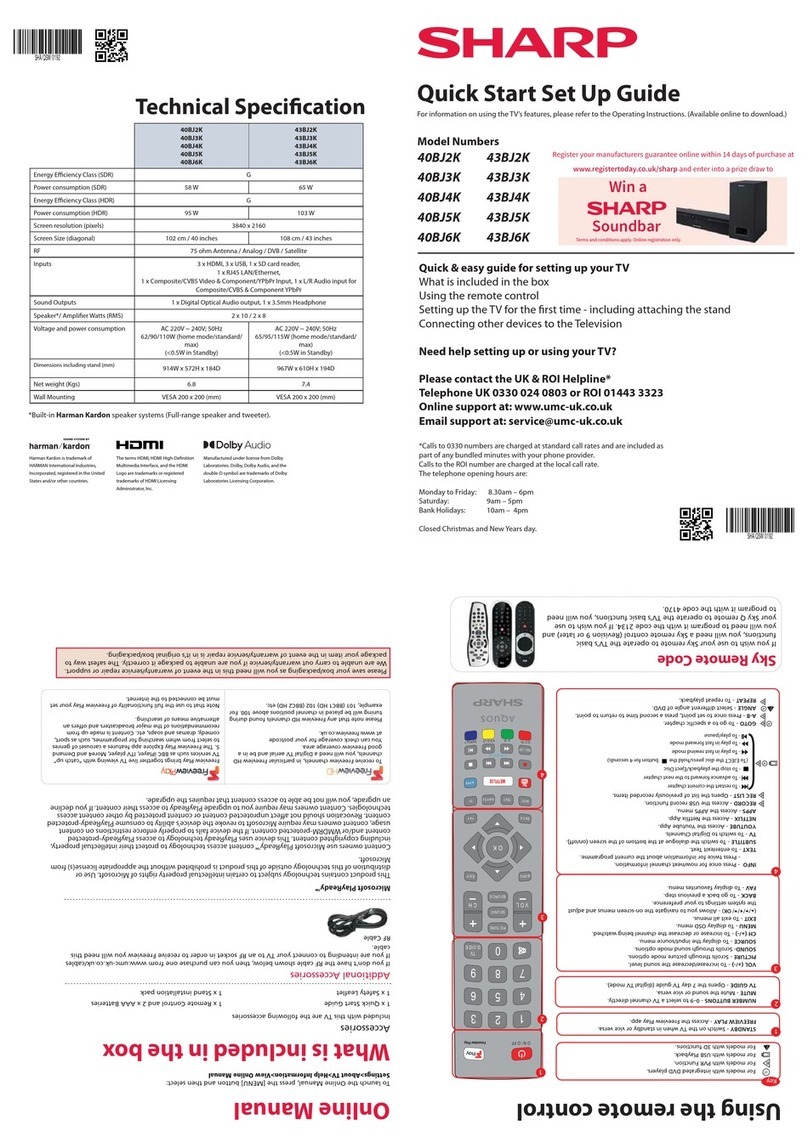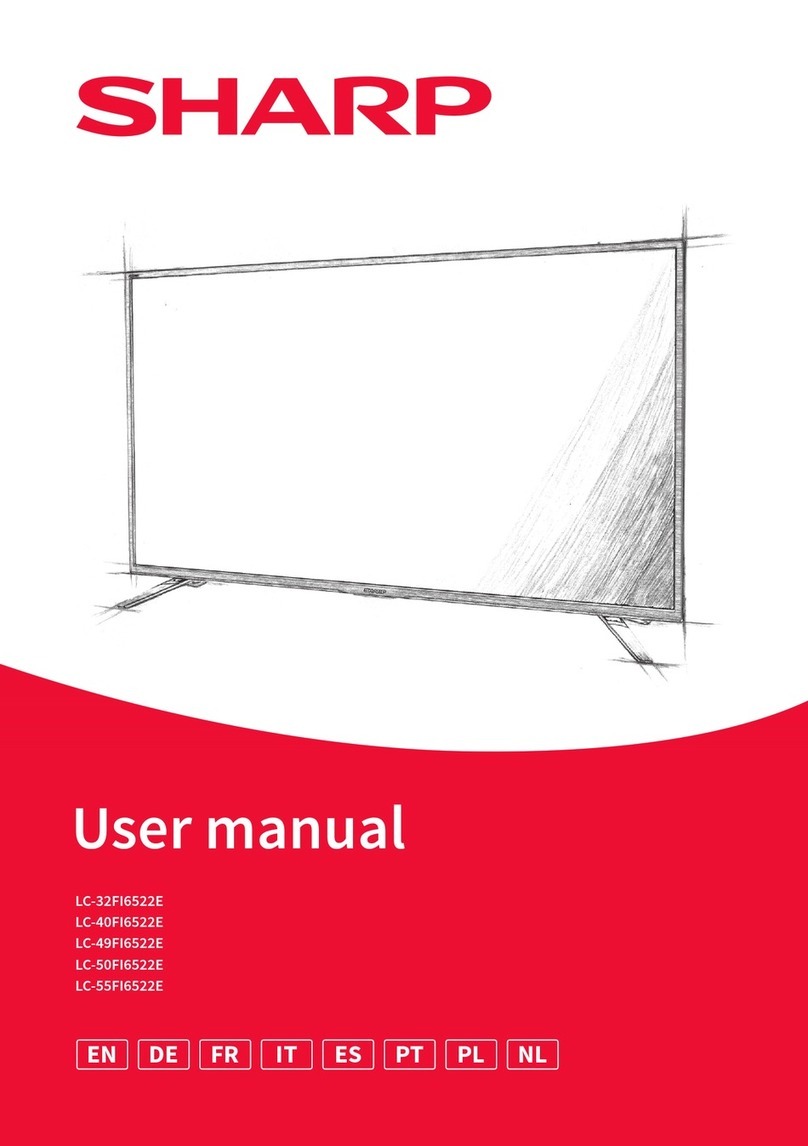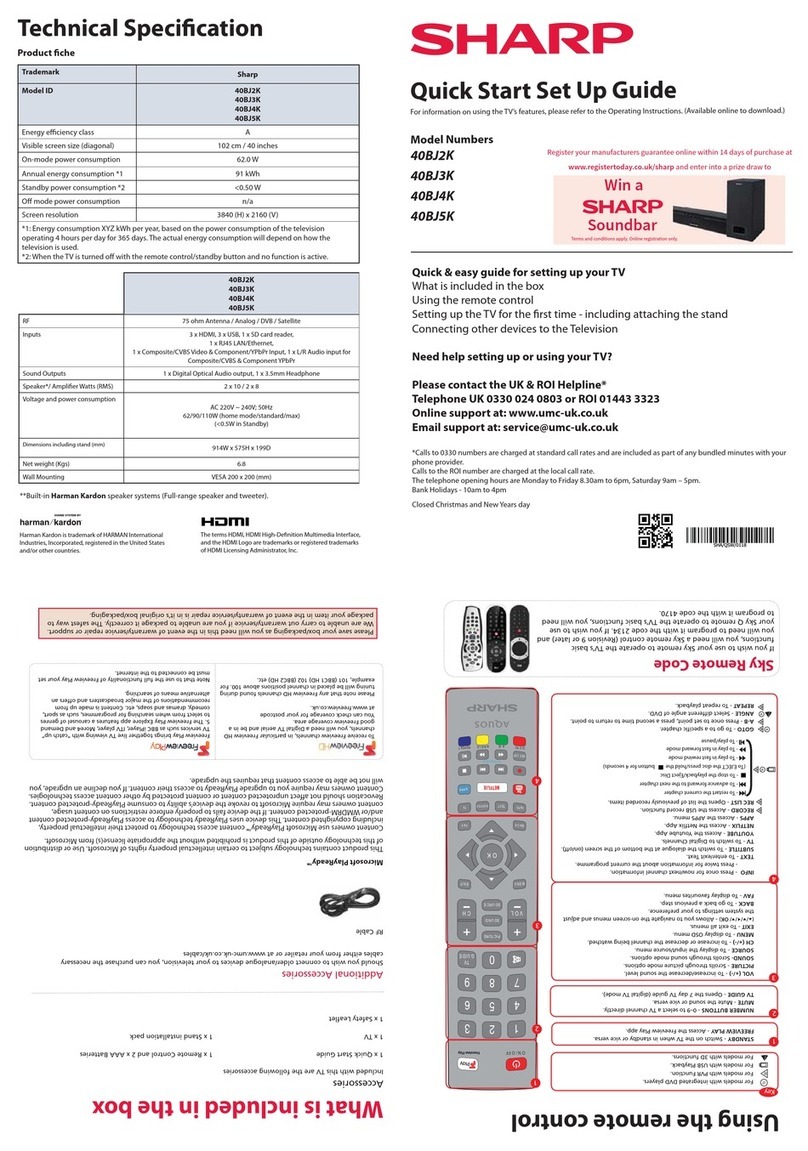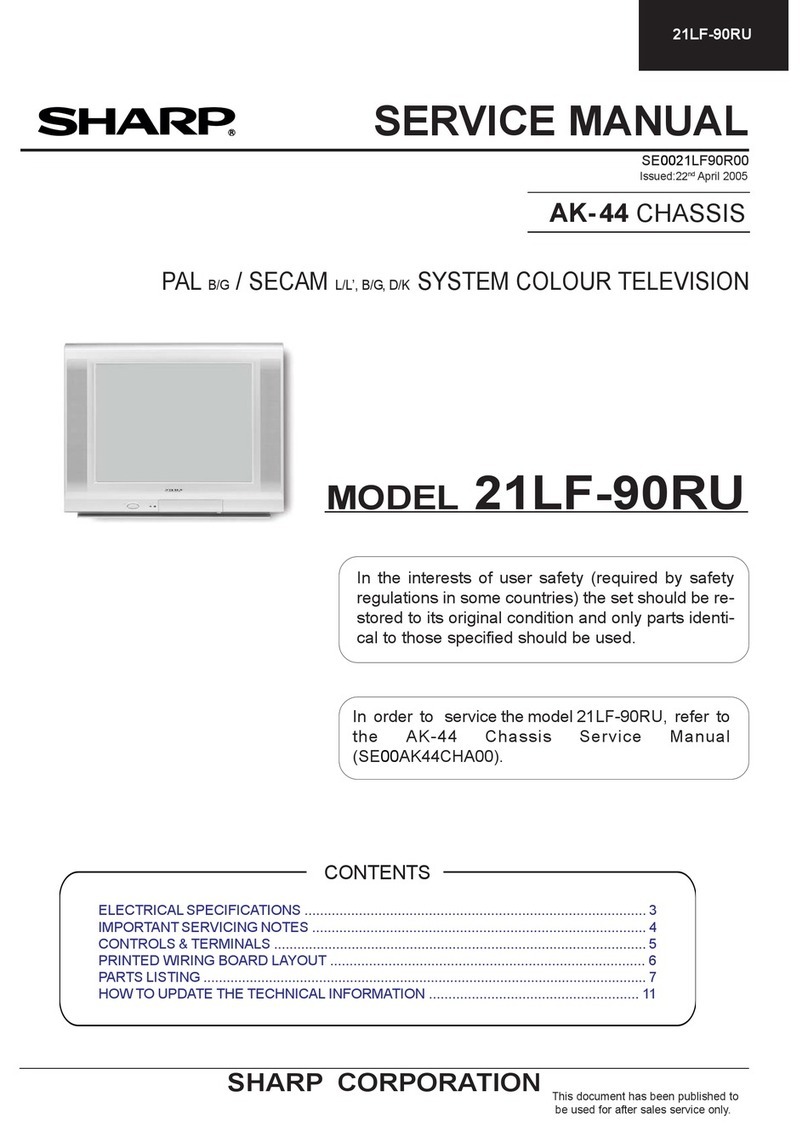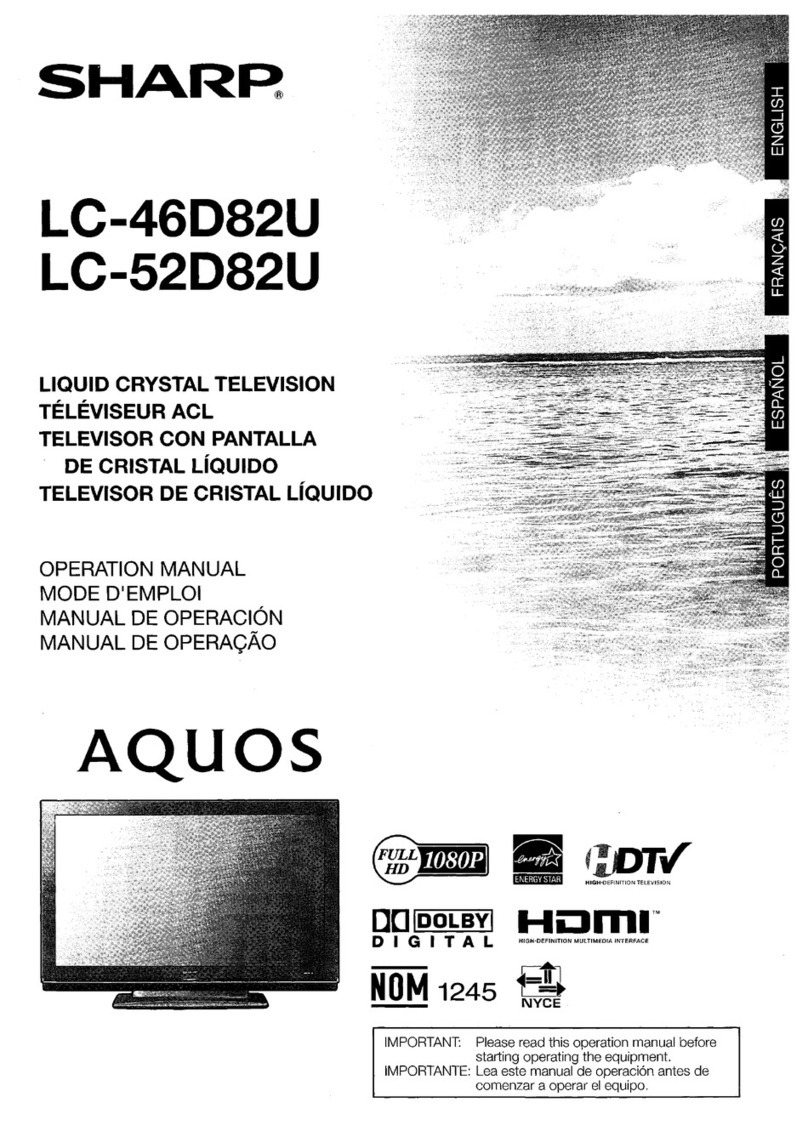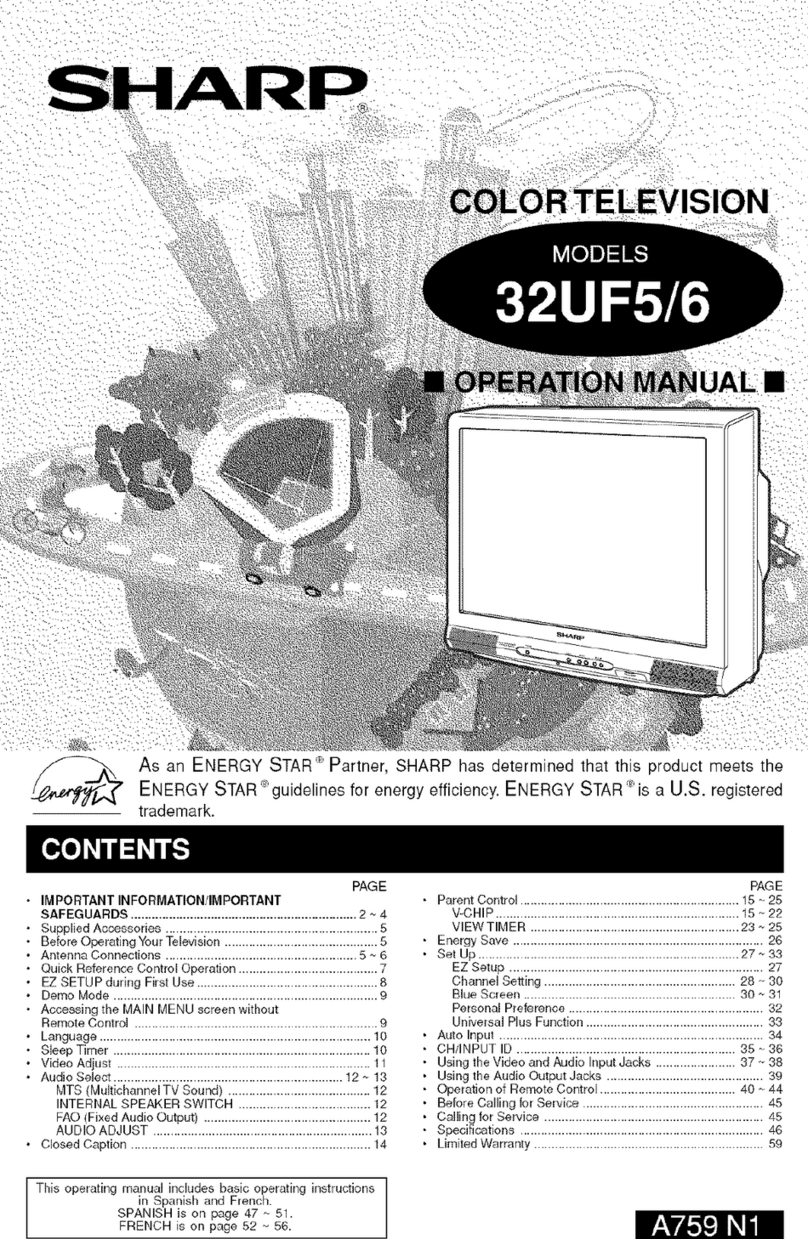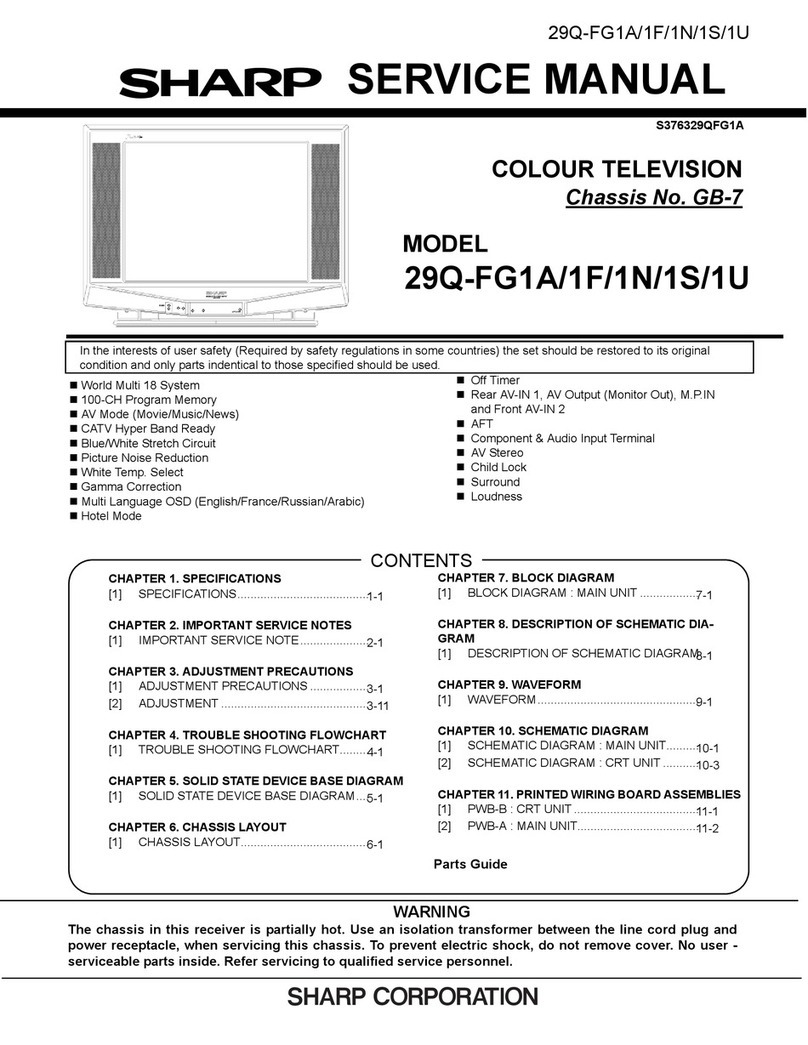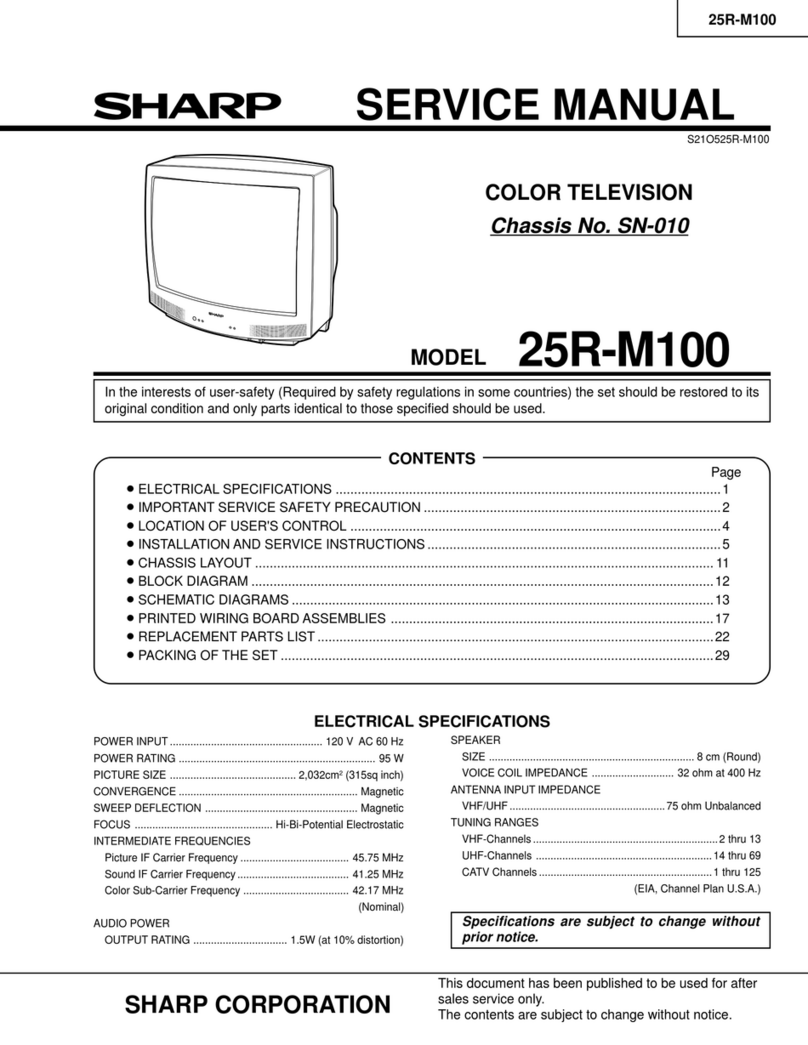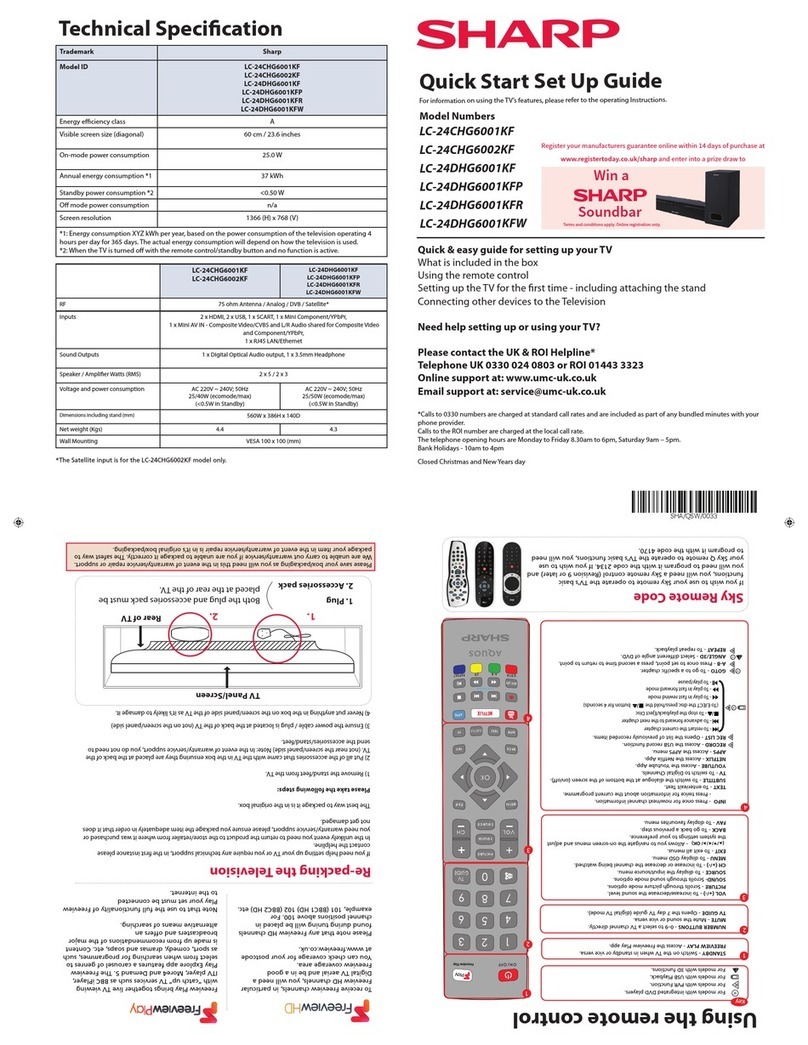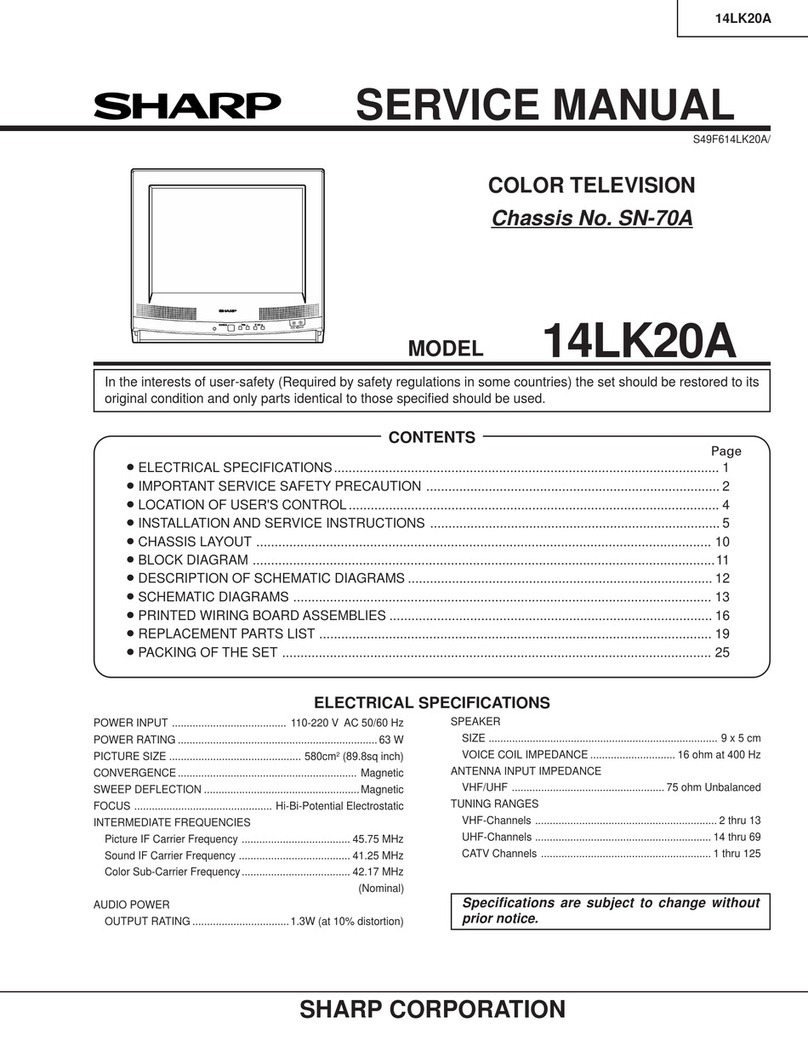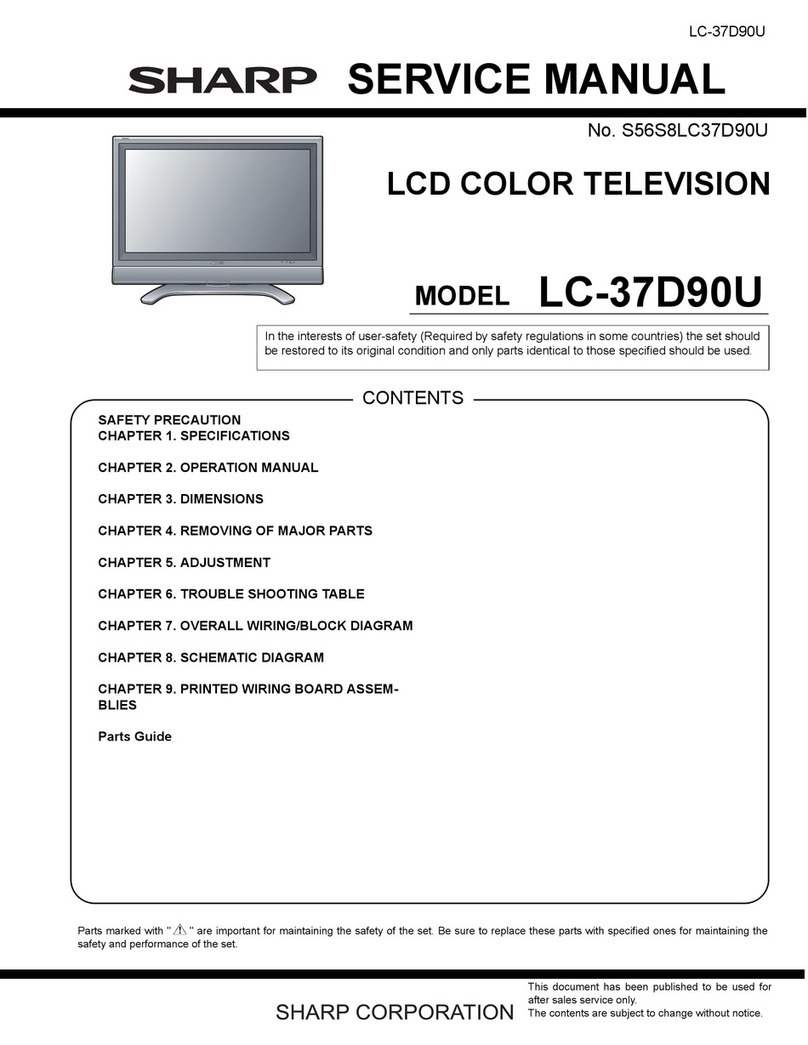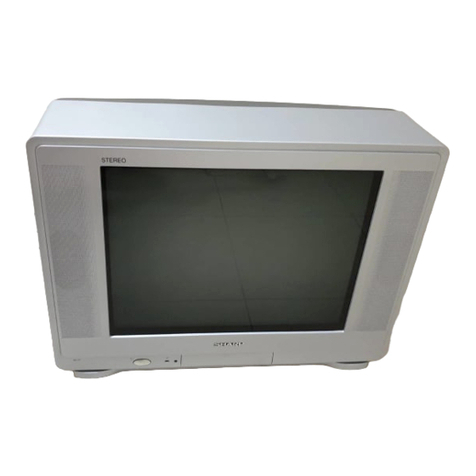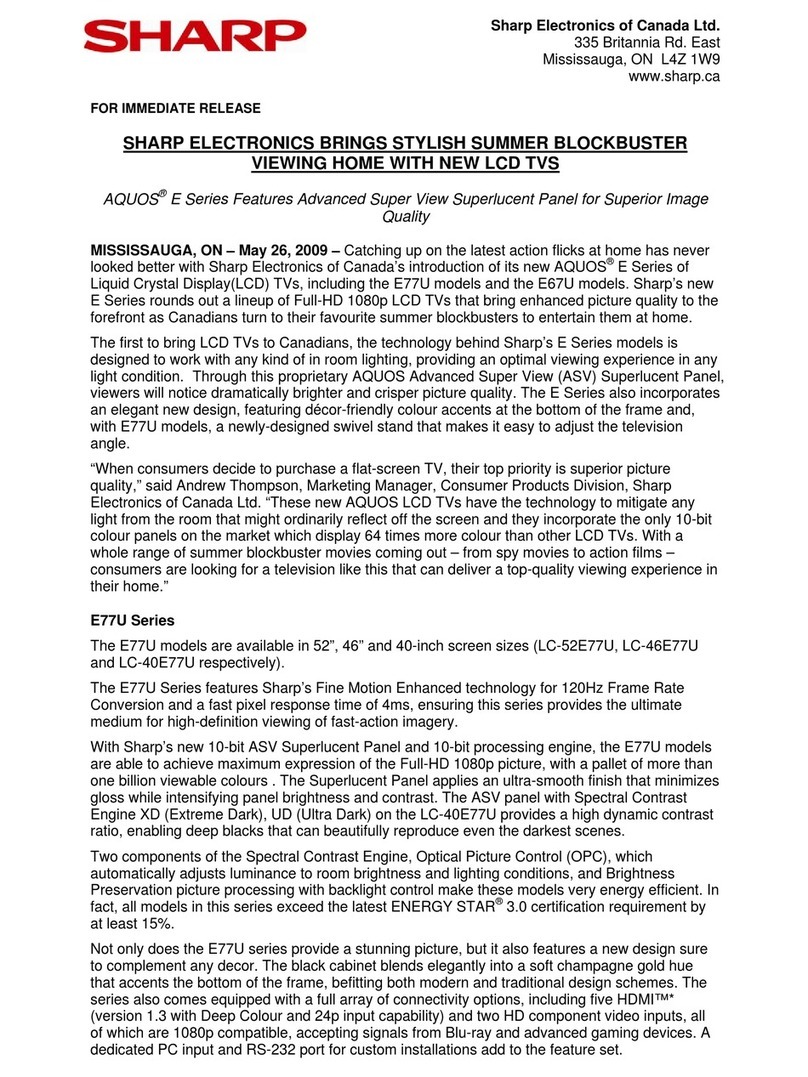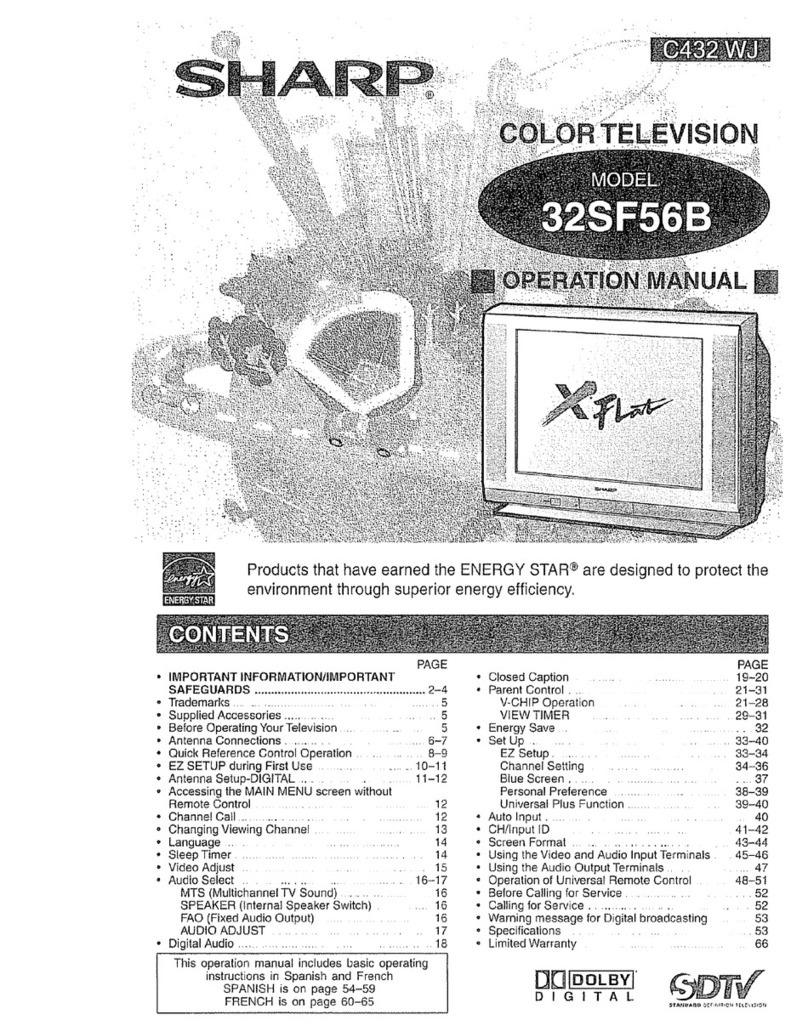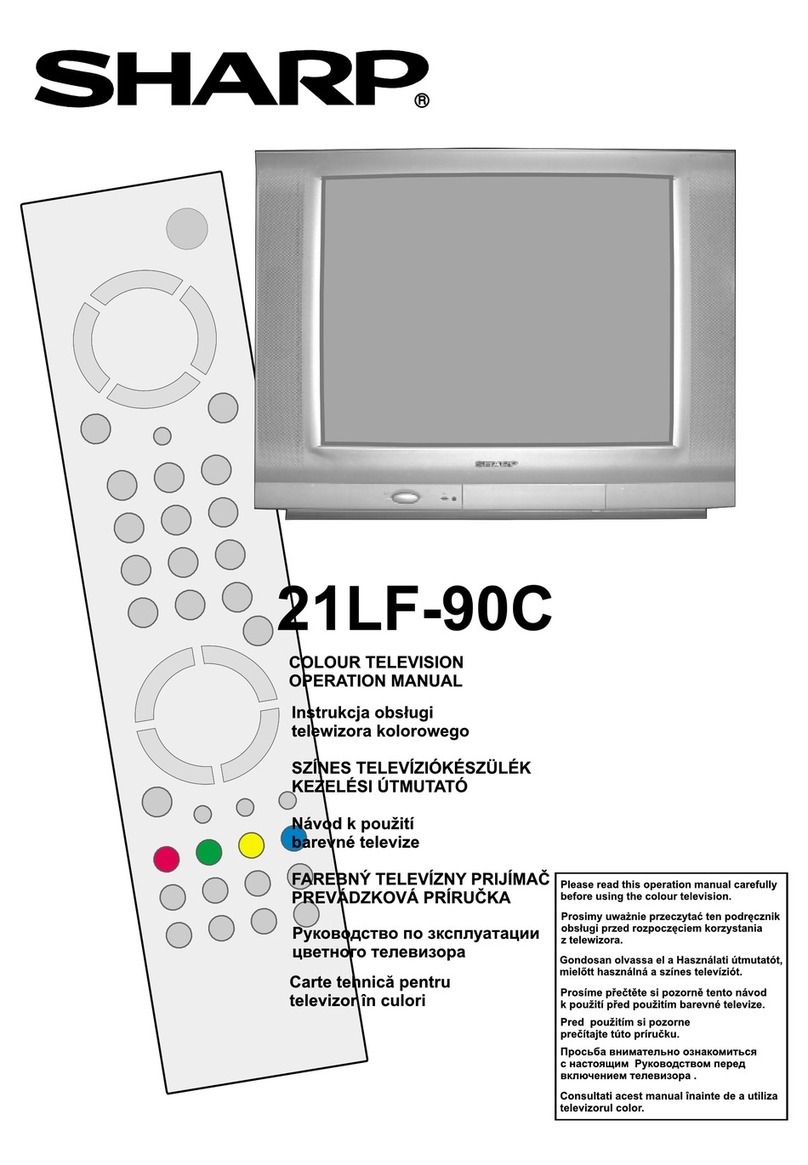
SHARP
SERVICE
MANUAL
SERVICE-ANLEITUNG
?
SERVICE
HANDBOK
|
Ef fl
Linyteon
PAL
SYSTEM
COLOUR
TELEVISION
PAL
SYSTEM
FARBFERNSEHGERAT
FARG-TV
MED
PAL-SYSTEM
MODELS
/MODELL.
/MODELL.
C-1004G,S,N
ELECTRICAL
SPECIFICATIONS
Aerial
Input...
2.
ee
ee
ee
75
ohm
unbalanced
Power
[nputic-es
ood.
6
Sek
nes
ae
ae
ah
220
volts
AC
50
Hz
Convergence
........
cee
eee
Self
Converging
System
12
volts
DC
FOGUS:
<<.
sseehclecehun
woety
Bb
ee
ee
ee
Bi-potential
electrostatic
Power
Consumption
..........00
50584
e
ae
42
Watt
(at
AC)
Audio
Power
Output
Rating
..........005
0.6
Watt
(max.)
37
Watt
(at
DC
12V)
Intermediate
Freqnencies
Speaker
Size/
:
Picture
IF
Carrier
Freqnency
..............
38.9
MHz
Voice
Coil
Impedance
..........
4
x
8cm
(8
ohm
at
400
Hz)
Sound
IF
Carrier
Freqnency
............24.
33.4
MHz
Sweep
Deflection...
2...
0...
ee
ee ee
ees
Magnetic
Colour
Sub-Carrier
Frequency
.......
40.4
MHz
(Nominal)
Tuning
Range.
..........
00200
VHF-Channels
2
thru
12
UHF-Channels
21
thru
69
TECHNISCHE
DATEN
Antenneneingangsimpedanz.........
75
Ohm
unausgeglichen
Stromversorgung
..
1...
6
ee ee
ee
220
Volt
Netzstrom
50
Hz
Konvergenz
..
2...
0...
ee
eee
Selbstkonvergierendes
System
42
Volt
Gteichstrom
Strahienbiindelung
..........--
Bi-potential
elektrostatishc
Leistungsaufnahme.
..........06.%
42
Watt
(bei
Netzstrom)
Tonausgangsleistung
..
2...
2
ee
ee
es
0,6
Watt
{max.)
37
Watt
(bei
Gleichstrom)
Zwischenfrequenzen
Lautsprechergr68/
Bildzwischentragerfrequenz
........-.-..200%
38,9
MHz
Lautsprecherspulenimpedanz.....
4
x
8
cm
(8
Ohm
bei
400:Hz)
Tonzwischentragerfrequenz....
2.1...
2
eee
eee
33,4
MHz
Abtastausschlag.
.
2...
ee
ee
es
Magnetisch
Farbuntertragerfrequenz
......:...
40,4
MHz
(nominal)
Abstimmbereich
.......0...-
002004
VHF
Kanile
2
bis
12
UHF
Kandle
21
bis
69
ELEKTRISKA
SPECIFIKATIONER
Antenninmatning.
.......002
2.220
75
ohm
obalancerad
Kraft
ineffekt.........0.0.,
BA
th
Segla
SR
B68,
MS
220
V
AC
50Hz
Konvergens
........020
08005
Sjalvkonvergerande
System
12V
DC
FOKUS:
hse
i
veces
oh
a
eh
Dubbelpotentiell
Elektrostatisk
Kraftférbrukning.
2.2...
ee
ee
ee
eee
42
Watt
(vid
AC)
Audio
Kraftuteffekt
varde
..........-.45
0,6
Watt
(max)
:
37
Watt
(vid
DC)
Mellanliggande
frekvenser
Hégtalares
storlek/
Bild
IF
Barvagsfrekvens
.......-.-.-..000-
38,9
MHz
Réstspole
impedans
..........
4
x
8
cm
(8
ohm
vid
400
Hz)
Ljud
IF
Barvagsfrekvens
..
2...
ee
eee
eee
33,4
MHz
Avs6kningsavbéjning....
2...
.
eee
ee
ee
Magnetisk
Farg
Underbarvagsfrekvens
.........
40,4
MHz
(Nominell)
_
Avstamningsomrade
.......-...-
VHF
kanaler
2
genom
12
UHF
kanaler
21
genom
69
C-1004G,S,N
